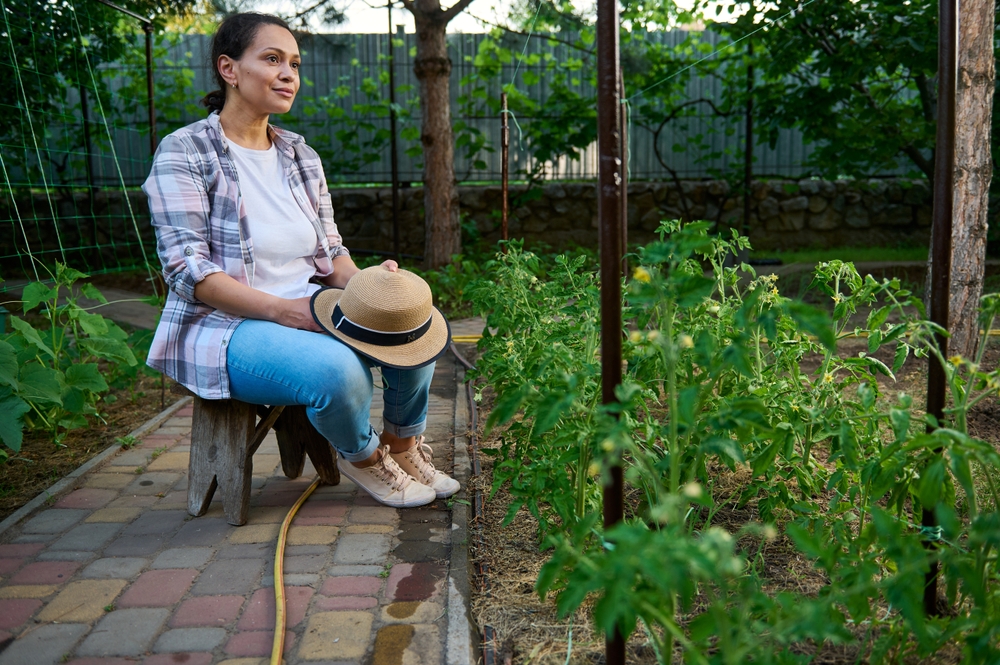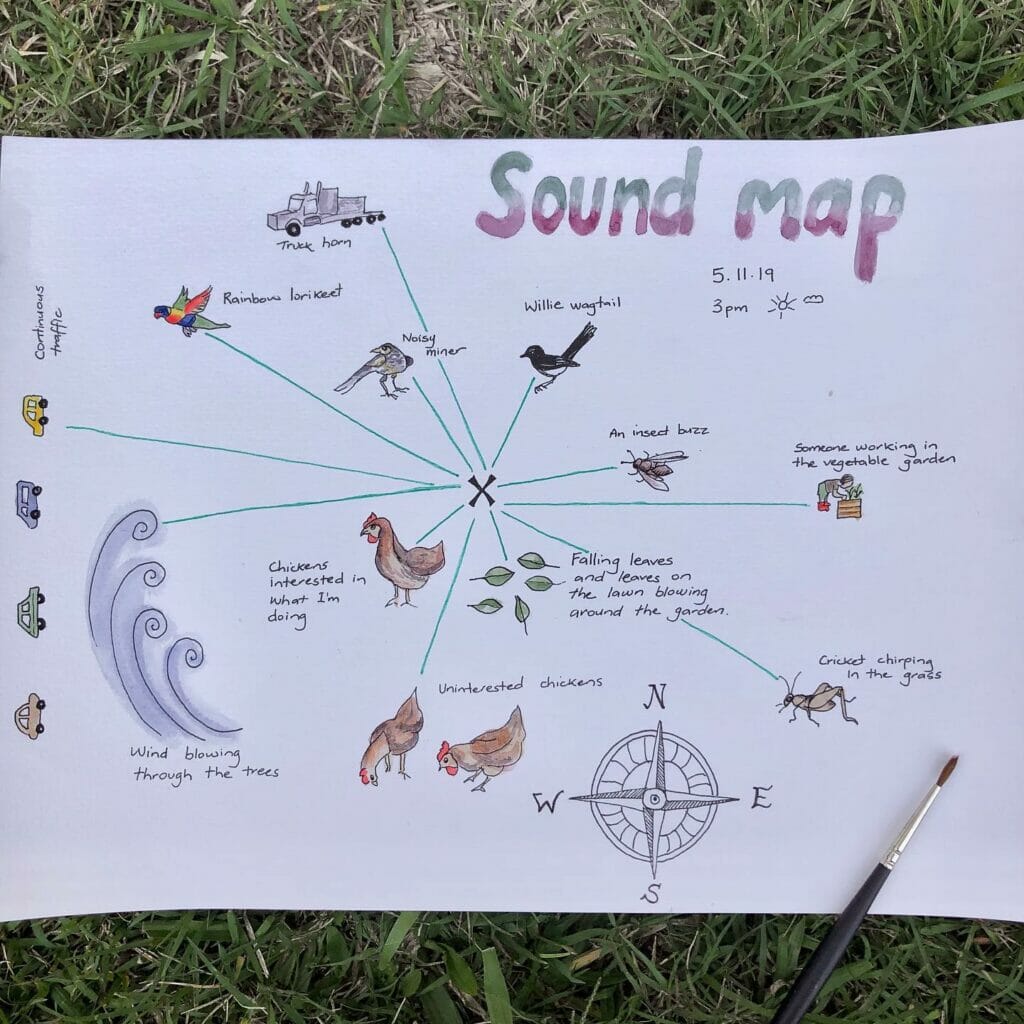Sound mapping can help you unplug and connect with the natural world.

Think about your garden. What comes to mind? Is it the color of a blooming poppy, the green sprouts of the first beans coming up? Are all your thoughts visual or do any of them include sounds? Today, we devote so much attention to visual observations, yet accessing other senses such as sound can help us connect with nature in a different way.
“Sound mapping is the practice of observing and listening to the sounds around you,” says Daniele Clarke, a registered psychologist and founder of Superpower Kids. “It can be done anywhere, but when practiced in a natural landscape, it can create a deeper connection with the natural world.”
The concept is simple. You sit in silence for a set period of time taking notice of the sounds you hear and where you hear them. Some sounds might be immediately identifiable, such as the wind rustling a windchime. Others will happen intermittently, perhaps the buzzing of a bee or birds chirping. And then there are sounds you might only be able to identify after staying and listening for a while.
“It’s a fun and easy activity that is friendly for the whole family that has the potential to open up an exciting dialogue of sounds if conducted in various settings,” says Raquel Vigil, senior curriculum manager for The Edible Schoolyard Project. “For example, families can use it to map the sounds of their home and compare those sounds to a map they might create of a family member’s home or a map of a park area.”

A sound map example. Photo courtesy of Journaling With Nature.
Sound mapping is an activity that helps us use our brains differently. It’s especially important for children, and it can help with cognitive development. It’s also a way for them to connect with the world around them and teach them about seasons and senses.
Additionally, for all of us, sound mapping provides a respite from our fast-paced world—a chance to unplug and connect with nature.
“Sound mapping can help reduce stress and improve focus and concentration. In addition, it is an excellent way to ground yourself, expand your senses and increase self-awareness by actively immersing yourself in the environment,” says Clarke.
It might feel strange the first time you participate in sound mapping. “Trust in the process. Honing the senses takes practice; at first, it can feel a little awkward,” says Vigil, adding that the activity can be adapted to fit different contexts and the needs of different people.
For those with auditory processing disorders or hearing impairments, where drawing awareness to sounds might be difficult, Vigil suggests adapting the activity by color mapping (look around and identify everything green) or sensations mapping (what textures or sensations do you feel?).
And while the home garden provides the ideal opportunity to start sound mapping, you can use any environment, even a city block sitting on a bench. The goal isn’t to observe particular sounds but to notice whatever sounds are there.
“The mapping activity itself is only part of the experience,” says Vigil. “For me, the real meat of the activity comes in the dialogue after, where you are encouraging conversation and critical thinking around the sounds observed.”
Over time, sound mapping can become a form of meditation, a way to help us feel more centered in the world and even teach us new things about our garden.
How to Get Started With Sound Mapping
1. Leave your phone behind or at least put it on do not disturb.
2. Find a comfortable spot to sit or lie down.
3. Set a timer for an amount between five and 30 minutes.
4. Close your eyes, sit in silence and listen to the sounds around you.
5. Clarke likes to have a piece of paper, marking a circle to represent herself, identifying sounds and writing them on the map where she hears them. But you could also simply listen or try keeping a notebook and write down the different sounds you hear each season.
6. Chances are your mind might wander a bit, so try to gently bring the focus back to the sounds when you catch yourself running through your to-do list in your head.
7. When your timer goes off, take a few deep breaths and give yourself a moment to transition back into the visual world.
8. If you’re planning to do this with your family, try it yourself a couple of times first, but once you start doing it with other people, Vigil likes having a post-activity about the sounds you heard.
9. Vigil suggests starting with sounds, but with kids, you might also consider other senses, such as what you smell or feel.
10. For kids, tie sound mapping into learning about the seasons by doing it once a week or once a month, slowly collecting observations that you can compare and contrast.
I have lived most of my life completely off grid. No phone, 60 cycle hum, refrigerator buzz on and off. [Propane refrigerators are silent and last forever. This was in a very remote place that gets extremely cold at times. It is amazing what you hear when there are few distractions beyond wind, horses snorting, dogs farting, tree frogs. It has been a real adjustment to move back to civilization, albeit rural Mexico. A huge advantage is that after forty years of no utility bills, I still don’t use much power, because I am accustomed to operating in darkness when… Read more »
Unfortunately our property is close to a major highway, so we get a tremendous amount of vehicle noise – a constant dull roar. Any comments on how this might effect us and the garden?
Just to sit in nature-on fresh mowed grass or deep into woods after a heavy Summer rain. Control breath so the mosquitoes fly past you because they don’t recognize your presence. Zero in on the sound of a Cardinal singing a different tune as it feeds on your sunflower seeds-that life ending to provide nourishment to babies in the nest.